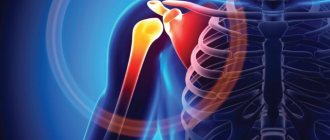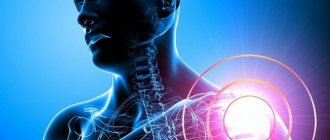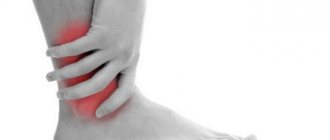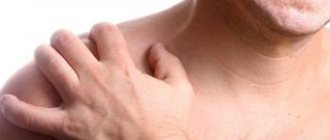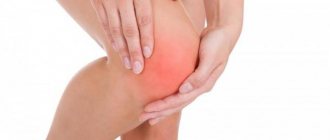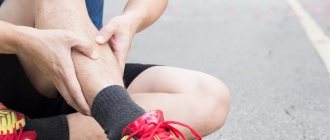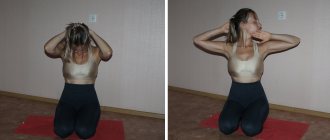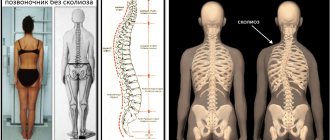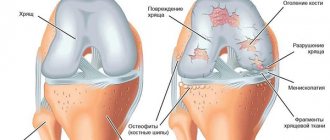Contrary to popular belief, the shoulder is the part of the arm from the shoulder to the elbow joint , and not the shoulder joint itself and its surrounding structures. A shoulder bruise is considered a simple injury , which rarely leads to serious complications. But in fact, it is not so harmless , and can cause serious problems with the functionality of the hand.
Photo 1. Shoulder contusion is an underestimated injury. Source: Flickr (Leet Speaking Missile).
Mechanism and causes of shoulder contusion
Bruise is a violation of the integrity of soft tissues without damage to the skin , which is accompanied by hemorrhage.
Such soft tissue injuries occur due to the impact of a hard object on the shoulder . As a rule, a shoulder bruise occurs during fights, during an accident or as a result of a fall.
During a bruise, soft tissue is pinched between a hard object and bone for a very short period of time. This leads to disruption of the integrity of small vessels and individual muscle fibers.
Classification and degrees of injury
In simple injuries, the damage affects mainly the upper layers - skin and tissue, while complex injuries affect deeper layers. Based on the complexity of the injury, the following degrees of injury severity are distinguished:
- I degree is characterized by minor injuries in the form of minor abrasions or subcutaneous hemorrhages;
- Stage II is accompanied by damage to muscle fibers, which causes severe pain, swelling and dysfunction;
- III degree of bruise develops due to fairly strong blows. It is characterized by damage to large volumes of muscle tissue, tendons, and large vessels;
- IV degree is characterized by significant impairment of the functions of the shoulder muscles, up to the complete inability to bend or straighten the arm.
Danger of injury
Soft tissue injuries can have serious negative consequences if not responded to properly. First of all, this is a limitation of the functionality and mobility of the hand soon after an injury.
A strong impact may damage the cartilage layer, which protects parts of the joint from friction. The appearance of a crack is the first step towards arthrosis - a degenerative disease of the joint. Most often it begins after a fall on the arm or a side blow.
Joint instability is one of the consequences that requires suturing of ligaments and tendons. Occurs after primary dislocation during injury.
Degree of injury
Shoulder bruises can be divided according to severity:
- No treatment needed. The person has no serious injuries - only minor bruises and abrasions.
- There is a deep hematoma, the shoulder is very painful and has limited mobility. Local temperatures may rise.
- Possible shoulder dislocation and tendon ruptures.
- Surgical intervention is necessary, since the function of the joint is completely impaired.
Before making a diagnosis, it is recommended to immobilize the joint so as not to aggravate existing defects. Only after an x-ray or ultrasound can you do anything with the injured hand.
Signs and symptoms of injury
The main sign of a shoulder injury is pain . It is aching, pressing or bursting in nature and can intensify with hand movements.
The next important sign is the presence of hemorrhages . They can be either completely insignificant or form quite large hematomas, occupying up to half of the entire surface of the shoulder.
Impaired function of the injured arm will always be present to a greater or lesser extent due to pain.
Significant limitation in movement can occur with massive hematomas, damage to a large number of muscle fibers, or injury to nerves.
Note! The greatest danger is posed by bruises on the inner surface of the shoulder, since a large neurovascular bundle passes there.
First aid for a shoulder injury
Providing first aid for bruises in the shoulder area comes down to following several points:
- The injured hand must be placed in a position in which the pain will be least pronounced ;
- Cold should be applied to the site of the injury . To do this, use an ice pack or a heating pad with cold water wrapped in a towel. Cold should be applied several times for 7 - 10 minutes, taking breaks of 5 minutes;
- In case of severe pain, it is necessary to give the victim any painkiller . The best option is analgin or ketanov.
Diagnostics
The main criterion for diagnosing a bruise is to clarify the circumstances of the injury . The condition of the injured limb is also assessed in order to exclude the presence of other injuries in the form of ligament ruptures and fractures.
An important point is to determine damage to the great vessels and nerves. To do this, the state of the pulse in the radial artery and sensitivity in the palm, fingers and back of the hand are assessed.
Photo 2. Normal resting heart rate is 60 - 80 beats per minute. Source: Flickr (ario_).
Treatment of bruise
The main type of treatment for bruises is symptomatic , aimed at eliminating pain. At the same time, none of the methods used is capable of reliably reducing recovery time.
Rules for treatment at home
When treating yourself on the first day, you should regularly, up to 10-15 times, apply cold to the site of the injury . This will reduce pain, relieve swelling and, in the first two degrees of severity, avoid the formation of a hematoma.
On days 4-5 after injury, it is possible to perform light warm-up exercises with a gradual increase in physical activity.
Drug treatment
There is no specific drug therapy for bruises. It is possible to use analgesic drugs orally or apply them locally in the form of ointments .
plasters for bruises containing anti-inflammatory and painkillers also have a positive effect
Folk remedies
The most effective folk remedies for bruises include:
- Take a piece of cloth and soak it in hot milk . Apply it to the bruised area on your shoulder and wrap it tightly with a plastic bag and then with a scarf. The procedure should be repeated up to 5 times a day for the first 4 - 6 days;
- The aloe leaf should be thoroughly crushed to a pulpy state. After this, apply it to the bruise in an even layer;
- Cabbage leaves help get rid of swelling and reduce pain, especially in the first days after injury. It should be applied to the site of the bruise up to 7 times a day for a week.
Therapeutic massage and physiotherapy
Carrying out any physical procedures, including massage, is indicated only 14 - 16 days after receiving a bruise , since their early use can increase swelling and hematoma.
Massage has a good effect when there is significant damage to muscle fibers or disruption of the integrity of nerve bundles.
Physiotherapy procedures include UHF, microwave, galvanization and electrophoresis , which promote faster restoration of muscle strength.
Treatment of shoulder instability.
The gold standard for treating damage is the Bankart procedure. It can be performed either through open surgery or arthroscopically. The second is preferable in most cases, as it is minimally invasive. During the manipulation, the separated part of the socket is fixed to the articular socket, which increases stability and prevents recurrent dislocations and other similar injuries. Careful preparation is carried out before arthroscopy. In consultation with a specialist, the patient’s tolerance to the components of anesthesia is clarified, blood and urine tests, and a coagulogram are taken. If blood clotting is poor, the patient is prescribed special medications. The procedure itself is carried out not under general anesthesia, but with the help of local (conduction) anesthesia, which is a significant advantage over classical surgery. During arthroscopy, the doctor makes two or three small incisions to access the joint, through which he inserts a camera and instruments. An image of the intra-articular cavity is displayed on the screen in real time, so all manipulations are clearly visible and can be carried out immediately after diagnosis.
If, as a diagnostic method, arthroscopy is sometimes inferior to MRI (due to the fact that MRI does not require even minimally invasive intervention), then as an operative technique it has no equal. The anatomical structure of the shoulder is quite difficult, and during a conventional operation it is inevitable to damage the tissue surrounding the problem area. Such a wound takes a very long time to heal and requires a very serious approach to the rehabilitation period, preventing one from leading a normal lifestyle for many months. There is no need to talk about a quick return to sports in such a situation. Previously, when arthroscopy was not yet so widespread, surgery was resorted to only as a last resort - after long and unsuccessful conservative treatment. Today, the situation has changed radically - its implementation does not cause additional injuries to a person, it even eliminates bleeding, which means that rehabilitation after arthroscopy is minimal.
To summarize, the main advantages of arthroscopy should be highlighted:
- low morbidity due to the minimally invasive method;
- minimizing the occurrence of complications;
- almost complete absence of cosmetic defects;
- quick recovery after surgery;
- highest diagnostic efficiency;
- simultaneous analysis of the problem and the operation itself.
Rehabilitation period
Complete recovery after a shoulder injury in the absence of complications occurs after 2 - 3 weeks. During this time, soft tissue swelling completely disappears, the hematoma resolves and damaged muscle fibers are restored. The return of the original strength indicators of the injured arm can occur only after a month, especially with bruises of III - IV degrees.
To more quickly return to the proper range of movements, physical therapy complexes and swimming .
It is advisable to combine physical activity with massage and/or physiotherapy , which will allow you to achieve full recovery as quickly as possible.
Rehabilitation
After arthroscopy, recovery is really fast, however, you should not neglect the doctor’s recommendations - only by listening to them can you regain lost functions in a short time. A return to the full range of arm movements occurs approximately one and a half months after the procedure, provided that all doctor’s instructions are followed, physical therapy visits, massage and magnetic therapy (the latter as needed). Depending on the specifics of the activity, return to sports is acceptable after about three months. The percentage of relapses among those undergoing surgery is quite low (about 5-7%).
Possible complications and consequences
All complications can be divided into primary, which occur under the influence of a traumatic factor, and secondary, which arise as a result of the inflammatory process caused by injury.
Serious primary complications of bruises are damage to nerves, blood vessels, tendons and muscles .
Secondary complications arise when treatment is not started in a timely manner, when the inflammatory process leads to serious changes.
This may lead to the following consequences:
- loss of sensation in the hand,
- development of post-traumatic arthrosis,
- inflammation of the joint and nearby tissues,
- complete or partial impairment of motor activity of a limb.
Massage for glenohumeral periarthritis
Massage for glenohumeral periarthritis is an important component of the treatment course and recovery process. Massage is combined with drug treatment, which will ensure a faster recovery. The method is aimed at preventing a decrease in joint activity and the development of rough scar tissue. muscle atrophy. It allows you to quickly restore the function of the upper limbs. In the acute phase of the disease, massage is not used.
With the help of massage, the collar area, glenohumeral joint and shoulder, deltoid and pectoralis major muscles are affected. Manual therapy is carried out only after acute inflammation in the joint capsule has been relieved and pain has been reduced. The procedures are carried out 14–20 days after immobilization of the joint. This allows you to obtain a pronounced therapeutic effect. Complete a course of effective treatment for glenohumeral periarthritis by making an appointment with a doctor by calling the contact center of the Yusupov Hospital.
